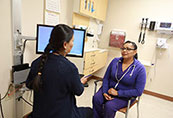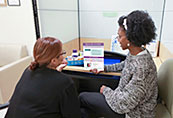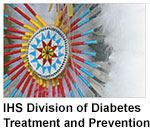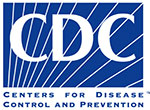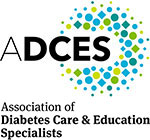Diabetes Standards of Care and Resources for Clinicians and Educators
Physical Activity
Physical Activity (PA) and exercise should be recommended and prescribed for all individuals with diabetes and those at risk for diabetes. Being active is an essential part of diabetes self-management. PA is important for achieving glycemic control goals and positively impacts overall physical health and mental well-being. Sufficient PA lowers blood glucose levels, and improves insulin action, body composition, strength, and endurance. Benefits also include enhanced sleep, mood, self-concept, and body image.
It is important that PA be addressed at every patient visit, as population surveys indicate that 50-79% of adults with diabetes remain insufficiently active and many who begin a regular exercise program do not continue over the long-term.1 PA does not have to be limited to sports, strength training, aerobic activity, or resistance types of exercise. It includes all movement and activities of daily living that expend energy. Any increase in PA to reduce sedentary behavior is beneficial.
Resource Links
for All Topics
» Online version
» Print version [PDF – 269 KB]
Clinical Practice Recommendations
Recommendations for Physical Activity
- Document each person’s current level of daily movement (including structured exercise and unstructured physical activity) at each clinic visit.
- Assess type of exercise, exercise intensity (light, moderate, vigorous), duration (minutes), and frequency (days/week) at follow up visits.
- Consider advising a daily step count as a self-assessment tool. Track Your Steps may be a helpful teaching resource.
- Assess type of exercise, exercise intensity (light, moderate, vigorous), duration (minutes), and frequency (days/week) at follow up visits.
- Assess individuals for medical conditions that might affect the type, frequency, duration, and intensity of the physical activity (PA) in which they engage at initial visit and as needed, but at least annually thereafter. The Physical Activity Readiness Questionnaire (PAR-Q+) Exit Disclaimer: You Are Leaving www.ihs.gov is one resource that can be useful in completing an initial assessment.2
- Evaluate the need for provider consultation or medical clearance. Specific guidance on pre-exercise evaluation is available in the ACSM Consensus Statement on Exercise/Physical Activity in Type 2 Diabetes.3 Exit Disclaimer: You Are Leaving www.ihs.gov
- Medical clearance is not needed for most individuals planning to participate in a low-to-moderate intensity PA like brisk walking. However, evaluation by a provider is needed for individuals diagnosed with cardiovascular disease (CVD), retinopathy, chronic kidney disease, and/or peripheral neuropathy.3 Special precautions may be necessary for these individuals.
- Further evaluation and medical clearance are recommended for exercise participation for:
- Individuals who report signs and symptoms suggestive of CVD (e.g. chest discomfort, lightheadedness, shortness of breath);
- Middle-aged and older individuals with diabetes who are not regularly exercising and want to begin a supervised high-intensity exercise program.
- Address physical activity (PA) at every diabetes visit.
- Assess level of motivational readiness and encourage people to set activity goals.
- Advise to begin slowly and increase gradually. Specific recommendations for increasing PA will vary by age, activity, and presence of diabetes-related complications.
- Develop person-centered recommendations based on consensus guidelines, see below.
American Diabetes Association (ADA) and American College of Sports Medicine (ACSM) Physical Activity/Exercise Recommendations3,4
| Components of PA/Exercise Plan | ADA and ACSM Guidance |
|---|---|
| Reducing Sedentary Time |
|
| General Recommendations |
|
| Muscular Strength |
|
| Flexibility and Balance |
|
Note: When appropriate and available, referral to a certified fitness or exercise specialist for supervision and coaching is highly recommended. For high-intensity training, participation in supervised exercise training is recommended over non-supervised programs.
- Provide general guidance on safety considerations for physical activity (PA) and address important safety issues more specific to people with diabetes. Important safety tips for people with diabetes include:
- Exercise at a safe intensity level.
- Take steps to avoid low blood glucose.
- Avoid high blood glucose and ketoacidosis.
- Stay hydrated.
- Use caution when exercising in hot and humid environments.
- Use caution when exercising in cold environments.
- Take care of feet.
- Be alert to personal safety.
See Additional Information: Safety Guidance for Counseling Individuals with Diabetes
- Share strategies for implementing and sustaining lifestyle changes that promote and increase physical activity (PA) such as:
- Look for ways to incorporate PA into your day.
- Find physical activities you enjoy.
- Make PA social (asking a friend or family member to accompany you).
- Walk your dog for regular PA.
- Interrupt prolonged sitting with activity breaks, such as walking or simple resistance activities, for 3-5 minutes every 30-60 minutes. View Move More Sit Less.
- Encourage goal setting and plans for overcoming barriers to PA.
- Leverage technology to promote, measure, or facilitate PA. Resources include cell phones, smart watches, fitness trackers, pedometers, step counters, and internet-based exercise programs.
References
- Armstrong, M, Colberg, SR, and Sigal, RJ. Where to Start? Physical Assessment, Readiness, and Exercise Recommendations for People With Type 1 or Type 2 Diabetes, Exit Disclaimer: You Are Leaving www.ihs.gov Diabetes Spectrum 2023; 36(2):105-113; doi: 10.2337/dsi22-0016
- ACSM’s Guidelines for Exercise Testing and Prescription, 12th Edition. Ozemek, C, editor. Wolter’s Kluwer Health, 2025 (Chapter 9, pp 348-389).
- Kanaley J, Colberg S, Corcoran M, et.al. Exercise/Physical Activity in Individuals with Type 2 Diabetes: A Consensus Statement from the American College of Sports Medicine. Exit Disclaimer: You Are Leaving www.ihs.gov Medicine & Science in Sports & Exercise 2022; 54(2): 353-368; doi: 10.1249/MSS.0000000000002800
- American Diabetes Association. 5. Facilitating Positive Health Behaviors and Well-being to Improve Health Outcomes: Standards of Care in Diabetes 2025 Exit Disclaimer: You Are Leaving www.ihs.gov Diabetes Care 2025;48(Supplement_1):S100-S104; doi: 10.2337/dc25-S005
- Centers for Disease Control. (December 2023). Talk Test. Measuring Physical Activity Intensity. https://www.cdc.gov/physical-activity-basics/measuring/index.html Exit Disclaimer: You Are Leaving www.ihs.gov
- Rowe W, Welk D., Heil D., et.al. Stride Rate Recommendations for Moderate-Intensity Walking. Exit Disclaimer: You Are Leaving www.ihs.gov Medicine & Science in Sports & Exercise 2011; 43(2): 312–318; doi: 10.1249/MSS.0b013e3181e9d99a
- Robertson RJ, Goss F, Rutkowski J, et.al. Concurrent validation of the OMNI perceived exertion scale for resistance exercise. Exit Disclaimer: You Are Leaving www.ihs.gov Medicine & Science in Sports & Exercise 2003; 35(2): 333–341; doi: 10.1249/01.MSS.0000048831.15016.2A
Clinician and Educator Resources
Featured Physical Activity Resources
Patient Education Resources
Physical Activity Patient Education Resources
| Organization | Resource |
|---|---|
|
Education Materials and Resources (Online Catalog) |
|
Diabetes Kickstart Video Series – Being Active Exit Disclaimer: You Are Leaving www.ihs.gov |
|
Exercise & Physical Activity Exit Disclaimer: You Are Leaving www.ihs.gov |
|
Breaking Sitting Streaks Exit Disclaimer: You Are Leaving www.ihs.gov |
|
ADCES7 Self Care Behaviors™: Being Active Exit Disclaimer: You Are Leaving www.ihs.gov [PDF] |
CME Training
| Session Title | Session Material | CME/CE Information |
|---|---|---|
|
Russell Price BS, CSCS
Wewoka Indian Health Center Wewoka, OK (Originally presented on 11/05/2025) |
Take Quiz |
|
New Managing Diabetes in Older Adults using Resistance Training Exit Disclaimer: You Are Leaving www.ihs.gov
Brian Laban
Native American Fitness Council John Blievernicht MA Native American Fitness Council (Originally presented on 09/19/2024) |
Take Quiz |
|
New Applying the ADCES 7-Self Care Behaviors in Navajo Communities Exit Disclaimer: You Are Leaving www.ihs.gov
Denee Bex MPH, RD, CDCES
Tumbleweed Nutrition LLC (Originally presented on 04/03/2024) |
Take Quiz |
|
New Exploring Fitness Instructor Certifications through the Native American Fitness Council (NAFC) Exit Disclaimer: You Are Leaving www.ihs.gov
Brian Laban
Native American Fitness Council (Originally presented on 02/07/2024) |
Take Quiz |
|
New Better Understanding Diet, Physical Activity, & Cardio-metabolic Health in American Indians Exit Disclaimer: You Are Leaving www.ihs.gov
Mandy Fretts PhD MPH
Department of Epidemiology University of Washington School of Public Health (Originally presented on 01/24/2024) |
Take Quiz |
|
New Mindful Exercise in Health and Disease: The Practice (Part 2) Exit Disclaimer: You Are Leaving www.ihs.gov
Ralph La Forge MSc, FNLA
Duke University Endocrine Division University of North Carolina Chapel Hill Program on Integrative Medicine (Originally presented on 12/20/2023) |
Take Quiz |
|
New Mindful Exercise in Health and Disease: The Science (Part 1) Exit Disclaimer: You Are Leaving www.ihs.gov
Ralph La Forge MSc, FNLA
Duke University Endocrine Division University of North Carolina Chapel Hill Program on Integrative Medicine (Originally presented on 12/06/2023) |
Take Quiz |
|
|
Ralph La Forge MSc, FNLA
Duke University Endocrine Division University of North Carolina Chapel Hill Program on Integrative Medicine (Originally presented on 08/09/2023) |
Take Quiz |
|
Additional Information: Safety Guidance for Counseling Individuals with Diabetes
| Safety Tips and Guidance for People with Diabetes | Rationale/Additional Information |
|---|---|
Exercise at a safe intensity level.
|
|
Avoid low blood glucose.
|
|
Avoid high blood glucose and ketoacidosis.
|
|
Stay hydrated.
|
|
Use caution when exercising in hot and humid environments.
|
|
Use caution when exercising in cold environments.
|
|
Take care of feet.
|
|
Be alert to personal safety.
|
|



